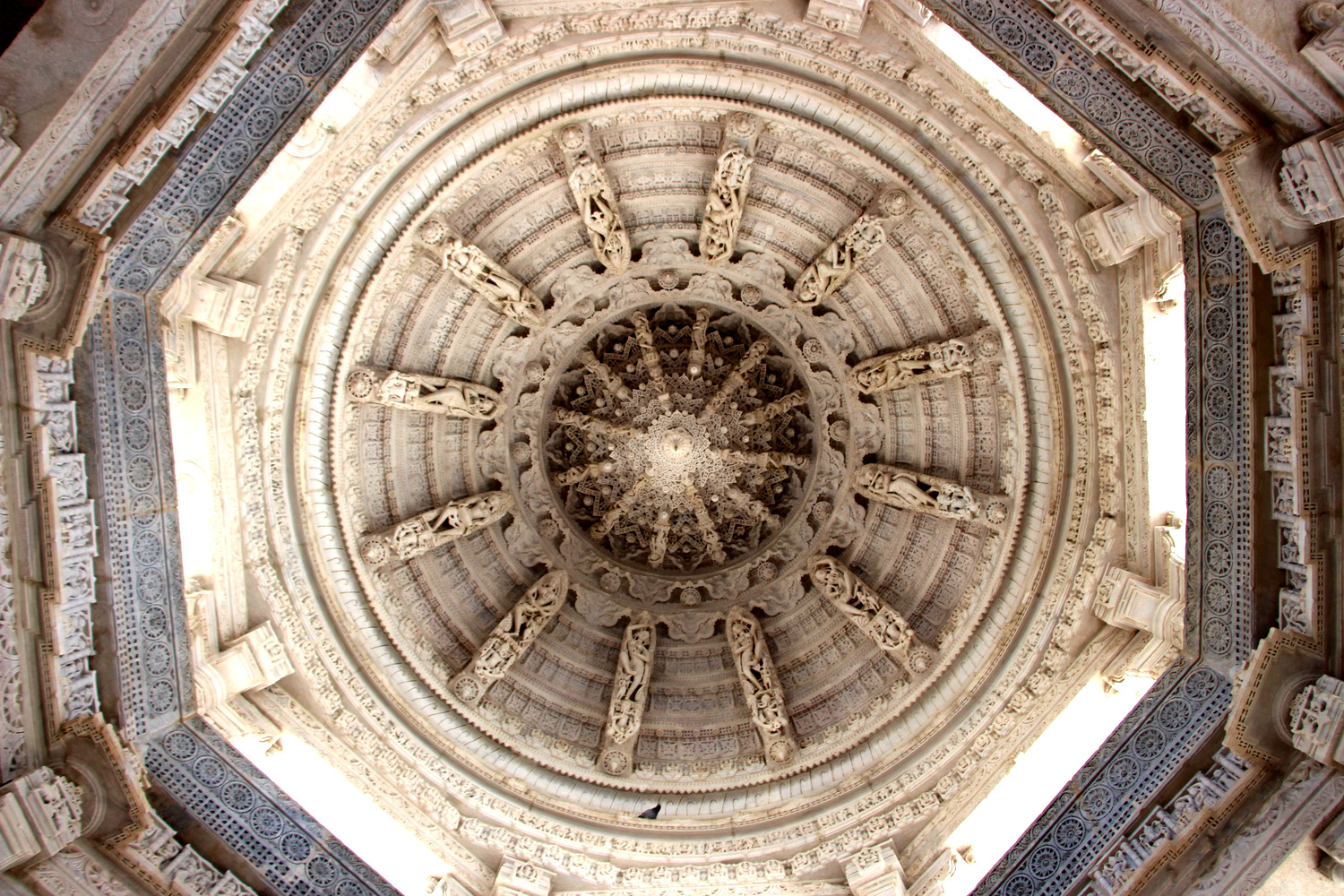India is an all-encompassing experience and a world unto itself. As we made our way through the country, we read as much as we could, both fact and fiction, to try and soak up this spectacular culture. We didn’t get enough.
For those lucky enough to have gone to India, there are no neutral feelings about it. You either are utterly and incandescently in love with India and glow when recounting tales, or you hold a passionate abhorrence and shudder at the thought of it. We unequivocally fall into the first category.
That doesn’t mean we don’t understand the haters. India is a LOT to take, and the sensory overload isn’t always pleasant. But it is a spectacular culture, and with 17% of the world’s population, it is a place you have to see.
We started at one of the coolest places: Mumbai (aka Bombay). We were lucky enough through Honeymoons.com to stay at one of the best hotels in the world: The Taj Palace Hotel. Not only is this hotel luxurious and beautiful, it is full of history that runs parallel to that of Mumbai itself. Read Blakely’s article to learn more, but this hotel is worth a trip to Mumbai. And of course, we had to take advantage of the amenities.
After exploring the hotel, we wanted to explore our neighborhood. Until fairly recently (1947) India was a British colony, and Mumbai holds gorgeous architecture that beautifully blends the two very different cultures.
Mumba is indicative of one of the hardest things for foreigners to take in about India—the sheer number of people. In India, there is an estimated population of 1.3 billion people, which equates a living space of only 4 square meters per person. The Mumbai train system transports 7.5 million commuters daily (that's larger than the entire population of Denmark). But the energy level of the city is unlike any other (this is coming from New Yorkers) and it will remain one of our favorite cities from the trip. A visit is best paired with reading Shantaram, a spectacular book that offers a visceral glimpse into India in all of its overwhelming magnificence.
Our number 1 recommendation in Mumbai is a Slum Tour. This sounds bizarre, we know, and photos aren’t allowed so we have very little evidence to show for how extraordinary this tour was (though, the fact they don’t allow photos speaks to the integrity of the company and their protection of the dignity of the people in the slums).
So first, erase anything you associate with the word slum, ghetto, or similar because Mumbai slums are not that. 62% of the Mumbai population live in a slum, including both our tour guide and our driver. Many of the slum inhabitants work towards the economy that their slum has adopted (more on that later), and others work very hard elsewhere in the city. These slum dwellers travel from impoverished villages for the opportunity of the big city, and they’re grateful to be able to live and work in Mumbai.
We went to three different types of slum. First to Dharavi, the second largest slum in India. We visited the portion where their industry is recycling, which makes it less fortunate because of the fumes. However, the industry employs approximately 250,000 people, exports goods all over the world, and is estimated to turnover between $650 million to $1 billion dollars per year. This was far from a utopia—the fumes were thick, the homes congested, and filth over every surface. But every single person was busy working.
Next, we went to Dhobi Ghat where most of the city (including luxury hotels) send their laundry. Through a complex labeling system, these workers collect the laundry, sort by color, handwash, dry and return TONS of laundry efficiently and correctly. Pictures were allowed here, but ours don't convey the immense operation this slum operates.
Lastly, we went to the portion of Dharavi that house many of the city's hotel and tourism workers. The bustle of the people in their crisp attire and focused walk dispelled any remaining prejudice we had against the slum.
The second thing we'd recommend is the Prince of Wales Museum, now called the Chhatrapati Shivaji Maharaj Vastu Sangrahalaya (with India's independence, they renamed everything to honor native history. Real confusing for the tourists, but fair!). It is located in a beautiful building in the Victoria Garden, and our favorite was the gorgeous ivory and saris.
We couldn’t stay in Mumbai forever, so next we flew to the north-western region of India called Rajasthan where we would stay for a couple weeks. Our first stop was a city called Udaipur, which is also known as the City of Lakes. Incredibly beautiful and romantic, the city’s main attraction is its palace and that’s where we headed first!
Ornate and immense, the palace took over 400 years to construct and is the largest palace in Rajasthan. It provides breathtaking panoramic views of the surrounding lakes and city, and listening to its story was a great snapshot into India’s history of Maharajas. Coupled with a lunch at the Palace View restaurant, and even a couple dusty travelers like us felt glamorous!
Blakely next stopped by an art school to learn about the traditional form on miniature art. This technique is practiced all over India, and uses tools like brushes made of camel eyelashes to make miniscule brushstrokes with natural dyes. The bottom picture is one that is now hanging in our home!
Next, we took a road trip through Rajasthan. Budget friendly India allowed us to have a driver to escort us, which enabled pit stops and roadside views that made the journey even better than the destinations. Among other sights, we stumbled upon a colorful road crew and Blakely couldn’t resist stopping. Most road crews we saw in India were women, which is extraordinary enough. What makes it even more remarkable is that the women wear the most gorgeous saris while performing their work. This group of women was full of laughs and energy, and taking pictures with them was a true highlight.
Isn't the fabric gorgeous?
Midway between Udaipur and our next destination was one of the stops we could NOT miss—the Ranakpour Temple. The temple is carved out of white marble, and the extravagantly intricate pillars, arches, and porticoes epitomize Indian architecture. There are 1444 marble pillars, and no two are the same. The marble creates a calm and coolness even in this chaotic sun-torched area. Absolutely stunning.
Our next destination was Jodhpur, which is known as the Blue City because most of the dwellings surrounding the city’s fort are painted a gorgeous bright blue. We stayed at a charming house that was converted into Hotel Singhvi. The Mehrangarh Fort rises out of the desert and, if I was a desert trader under constant threat of being robbed, it is exactly where I would go. It holds several palaces, which in true Indian fashion are full of gorgeous carvings and refreshingly cool courtyards. The museum is one of the best in Rajasthan, and holds costumes, paintings, and arms used by the Majarajas in the 1400s.
Next up: Glamping in the Indian desert of course. You can read about our adventure at Damodra Camp here. We met some of our favorite people and had adventures that could only be had in the desert of India.
Next we made a quick stop in Jaisalmer, called the Golden City, to tour its magnificent fort. Again, the vast size coupled with the intricate detail makes walking through these fort/palaces a delight.
We next hopped on a train to Jaipur, where we stayed at the gorgeous palace/hotel Alsisar Haveli, which you can read about on Blakely’s Honeymoons.com article here. Jaipur is the capital and largest city in Rajasthan, and it is known as “The Pink City” due to the gorgeous coral color of the palace and surrounding city.
Just outside of town is the magnificent Amer Fort. Constructed of red sandstone and marble, this fort and palace holds four levels for different purposes, and massive facilities to house the royal family. Our favorite was the huge courtyards, where water fixtures run through the walls and ground to keep the air cool.
On the way home, we stopped by our last tourist attraction of Rajasthan: the Jal Mahal, which is a palace in the middle of the lake and appears to be floating over the water. We weren’t finished though! We visited one of the local textile factories to spur the local economies. Absolutely gorgeous hand printed and embroidered fabric, but be prepared to negotiate!
Our time in India was so full, we divided it into two posts. Next, read about our time at the Taj Mahal, the Holi Festival in New Delhi, and the spiritual capital of the Hindu world Varanasi!

